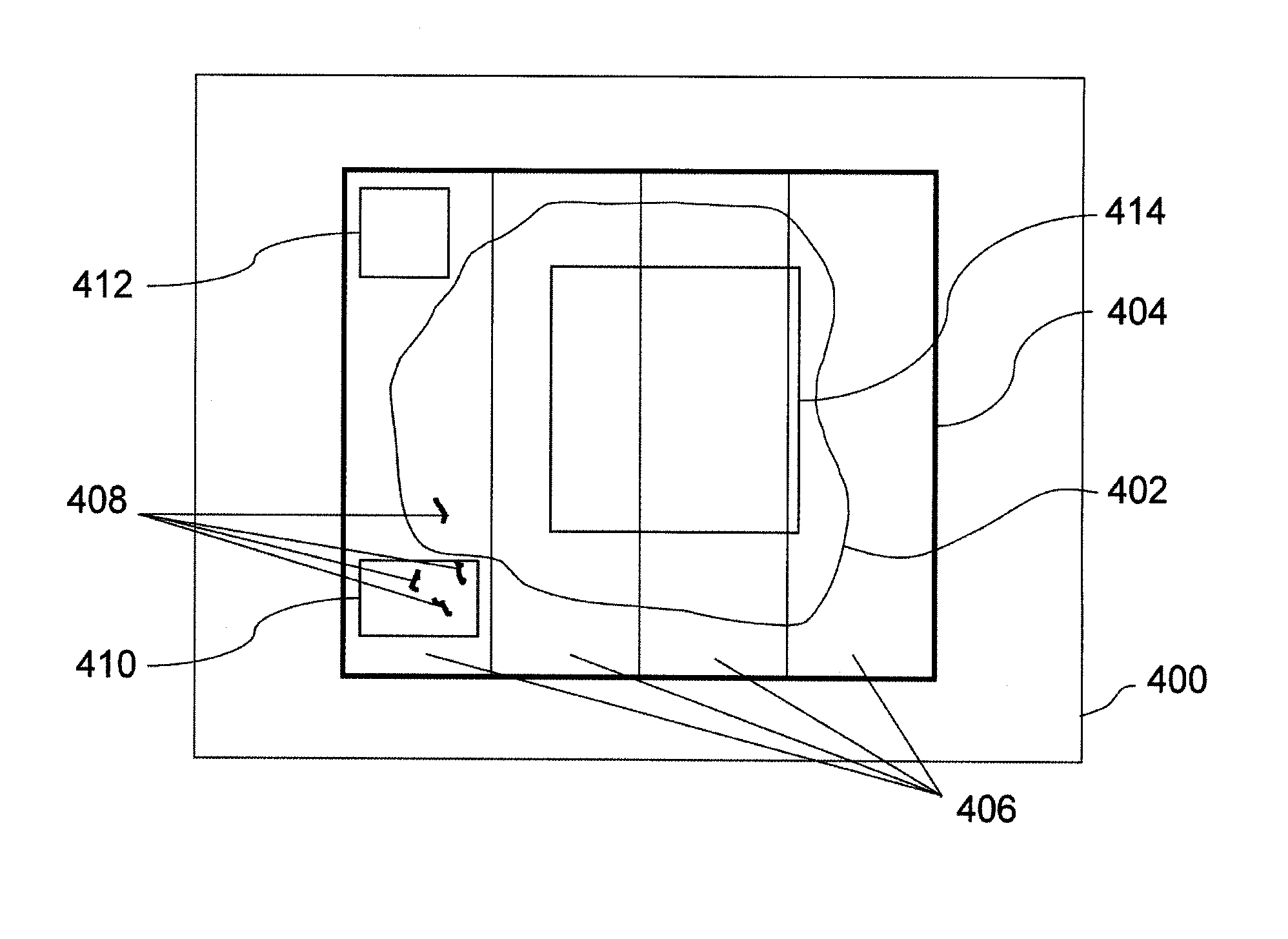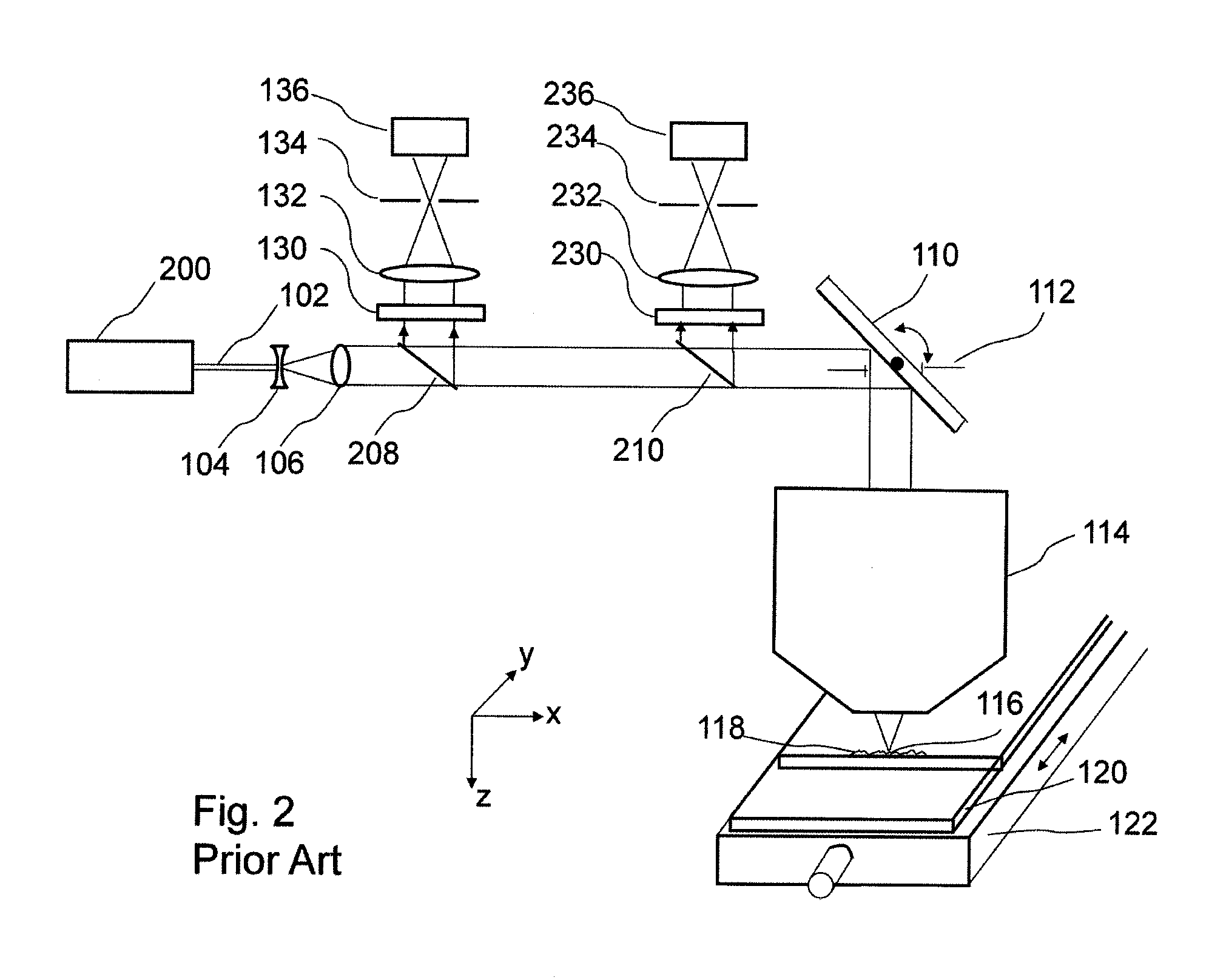Imaging system with dynamic range maximization
a dynamic range and imaging system technology, applied in material analysis, instruments, computer peripheral equipment, etc., can solve the problems of large differences in fluorescence intensity and set the gain, and achieve the effect of rapid test, easy loading and processing
- Summary
- Abstract
- Description
- Claims
- Application Information
AI Technical Summary
Benefits of technology
Problems solved by technology
Method used
Image
Examples
first embodiment
[0141]this invention is a method and macroscope that will:[0142]image the entire specimen rapidly in preview mode, where only a small fraction of pixels (a sparse image) are recorded across a field-of-view that includes the entire specimen, where those pixels have the same size and exposure as those same pixels would have in the final image if no changes were made in detection gain and offset before scanning,[0143]Calculate and display a histogram of the preview image,[0144]Increase (or reduce) the detection channel gain so that the brightest pixel in the preview image has a value less than the maximum pixel value for the dynamic range of the detection system,[0145]Adjust the preamplifier offset (if possible) to move the dimmest pixel in the preview image close to the 0 end of the histogram.
[0146]FIG. 24 shows the series of steps for imaging in which a histogram of the Sparse Preview Image (a separate histogram for each fluorophore or channel) is used to set gain and offset for each...
second embodiment
[0152]this invention is a microscope (or slide scanner) that has a larger dynamic range for measurement than the dynamic range required in the final image, and a method for contracting the dynamic range of the measured data to use all or substantially all of the dynamic range available in the final image file. (The image shown in FIG. 5 is a good example of an image where the gain and offset were incorrect, and only part of the dynamic range of the final image file was utilized.)
[0153]One example of such an instrument is a macroscope with a dynamic range of 12 bits per channel, where the dynamic range required in the final image file is 8 bits per fluorophore (each fluorophore is imaged using a separate channel). A histogram of hypothetical fluorescence image data from one 12-bit channel of the macroscope is shown at the top of FIG. 23, which shows a plot of the Number of Pixels (vertical axis) vs. Pixel Value (fluorescence intensity) on the horizontal axis. This plot shows the numb...
third embodiment
[0161]this invention is to provide a microscope (or slide scanner) and method for calculating, displaying and storing as metadata attached to the final image file a histogram of the pixel intensity data in that image file, where the histogram is calculated on-the-fly during scanning. A separate histogram is required for each fluorophore.
[0162]When using a 12-bit detector, 4096 memory locations are dedicated to storing the histogram. The TISSUEscope will be used as an example. During scan, data from each fluorophore scan line is transmitted from the TISSUEscope optics module to the computer controlling the scan. These scan lines usually contain from 10,000 to 40,000 data points (pixels) which are used to update the image display on the computer screen and are stored in a data file in RAM (for small image files) or on a hard drive or other storage device (for large image files). To calculate an image data histogram on-the-fly, during scan, the pixel value of each data point in that sc...
PUM
 Login to View More
Login to View More Abstract
Description
Claims
Application Information
 Login to View More
Login to View More - R&D
- Intellectual Property
- Life Sciences
- Materials
- Tech Scout
- Unparalleled Data Quality
- Higher Quality Content
- 60% Fewer Hallucinations
Browse by: Latest US Patents, China's latest patents, Technical Efficacy Thesaurus, Application Domain, Technology Topic, Popular Technical Reports.
© 2025 PatSnap. All rights reserved.Legal|Privacy policy|Modern Slavery Act Transparency Statement|Sitemap|About US| Contact US: help@patsnap.com



